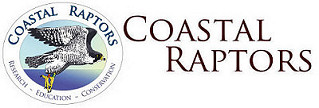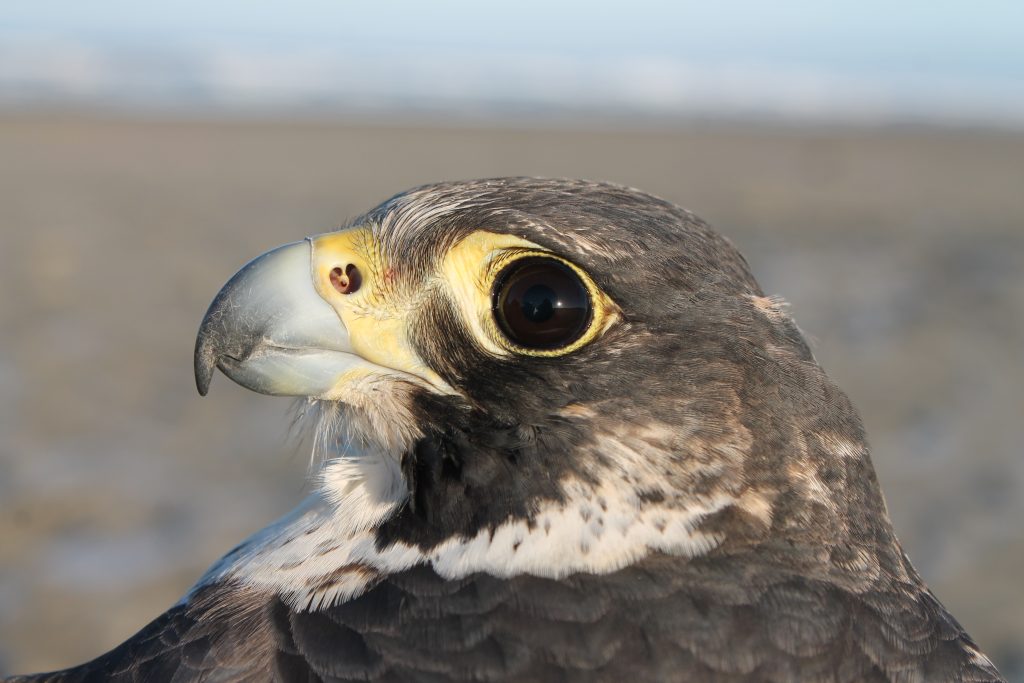
Z/U, a female Peale’s Peregrine Falcon banded by Coastal Raptors in 2015, was found dead near Ruby Beach on the Olympic Peninsula’s north coast. The falcon was found by Jessie Huggins and Dyanna Lambourne on October 9, 2022.
It’s worth noting that Jessie and Dyanna are members of the West Coast Marine Mammal Stranding Network (Stranding Network). I’ve known them both for years. They happened upon Z/U while responding to a report of a dead beach-cast Humpback Whale. Upon examining the whale carcass, they concluded that it had died from a ship strike. Sadly, ship strikes are all too common on Washington’s coast. For more information on this whale and others that have met a similar fate in Washington, click here.
Jessie sent me an email with information on their discovery including the photos below on October 10.
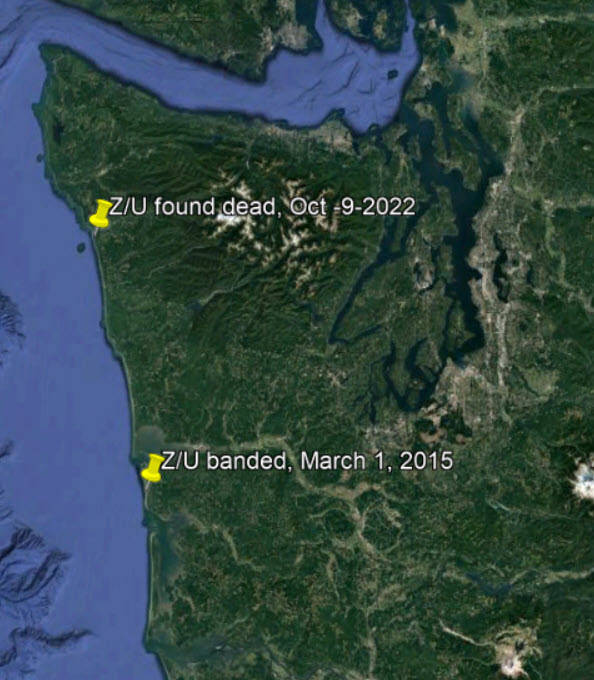

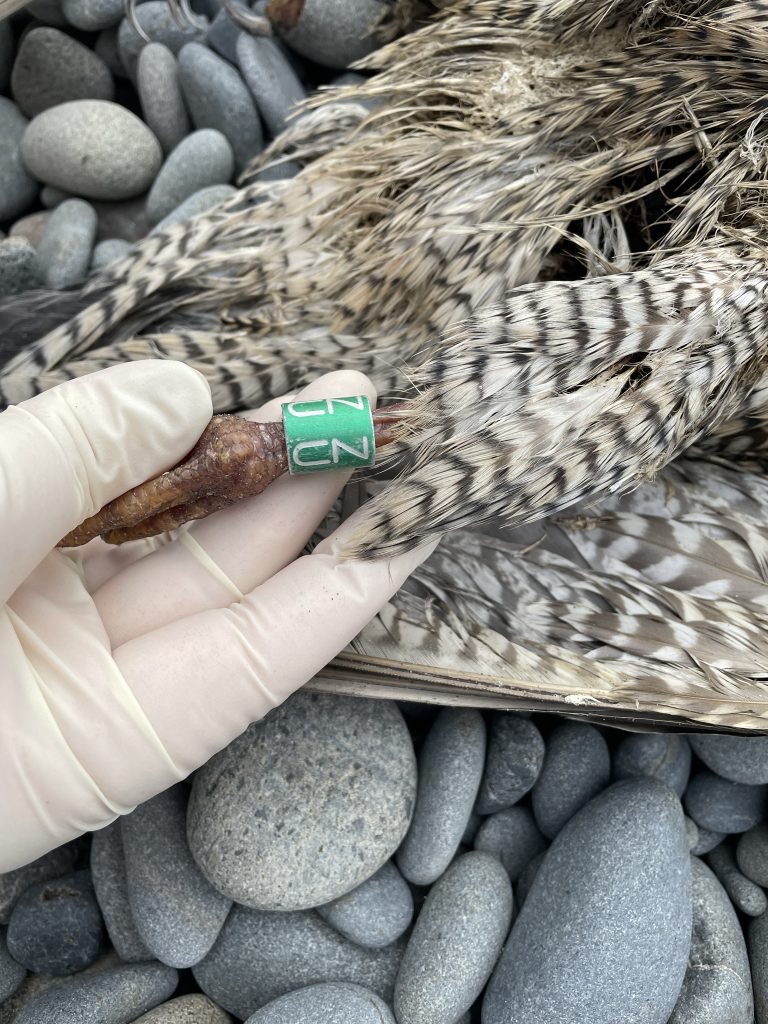
On December 24, 2022 I received a second report on P/U. This one came via email from the US Geological Survey Bird Banding Lab (BBL). The info provided indicated that Z/U was found on September 30 by Mara Zimmerman. While the news arrived more than two months after my report from Jessie and Dyanna, it was helpful in that it established that P/U had been dead for 9 days when those two discovered the carcass on October 9.
I contacted Mara to learn more than was available in the BBL report. She said that she had discovered the carcass after stopping on the beach for a short walk. Mara had submitted a report online to the Bird Banding Lab the day of her discovery.
It’s surprising to me that it took as long as it did for Mara’s report to get to me through the BBL. I’ve received dozens of reports from the BBL on raptors an ravens that I’ve banded over the years. Most of the time they come in closer to the time the observations were made.
Mara shared a photo that which appears to me to show blood on the legs and feet (below, left). In the hundreds of peregrines I’ve observed in-hand and from afar by spotting scope over the years, I’ve never seen blood stains in this location.
I shared Mara’s photo with friend and colleague Scott Ford, asking his opinion on what might have caused the stains. Scott is a board-certified avian veterinarian; he’s necropsied many birds over the course of his career. (Scott is a key collaborator on the Coastal Raptors Scavenger Monitoring research project.)
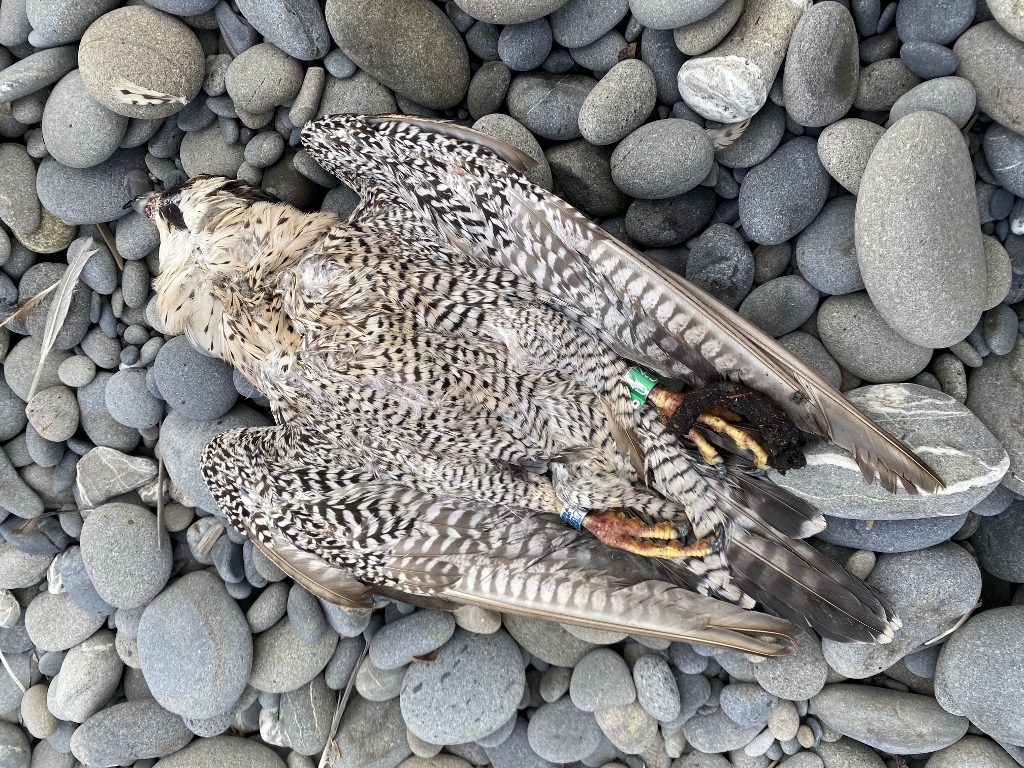
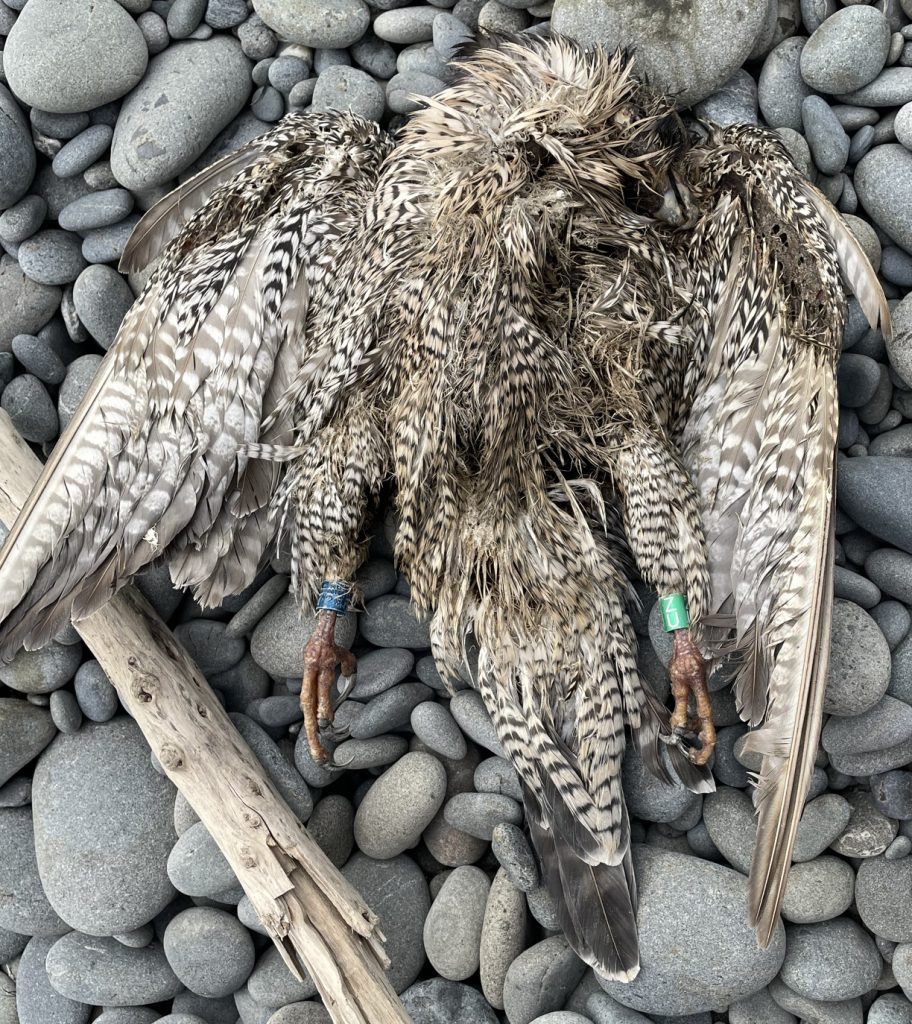
Quoting Scott: The distribution if the red color makes me less sure that it’s blood. It’s concentrated on the most exposed part of the foot and each knuckle of the toes. It’s not randomly distributed or thicker in spots like flowing and clotting blood tends to create. Its also concentrated in areas with less flesh covering the bone. Also the red color has a softened quality suggesting it is coming from flesh rather than superficial contamination (which would block details of the skin). This is more typical of freezing after death. I don’t think it’s likely frostbite …
So, in summary, I think it’s a postmortem change. Ultimately, the best chance to know cause of death is to examine whatever remains of the carcass.
Given that P/U was found dead in on September 30 on the Washington coast, freezing after death can be ruled out as the cause. The carcass was not recovered so this is where the story ends.
Remembering Z/U
March 1, 2015: Banding Day for Z/U. The first plumage acquired by nestlings, following the initial downy plumage, is retained by juvenile Peregrine Falcons for about a year. This plumage is technically referred to as the juvenal plumage. In peregrines the juvenal feathers on the back, wings and tail are brown. At capture Z/U had a few brown feathers remaining from her juvenal plumage, indicating to us that she was a one year old.


Z/U was nine years old at the time of her passing. She was re-sighed alive eight times between 2015 and 2022; four of these re-sightings were by Coastal Raptors during surveys and four were by people not directly connected to the research effort. All re-sightings took place on the Grayland beach where she was banded.
Two of the Coastal Raptors re-sightings included recapturing her to assess for exposure to contaminants and disease pathogens. For more on that part of Coastal Raptors research, click here, then scroll to the bottom of the page.
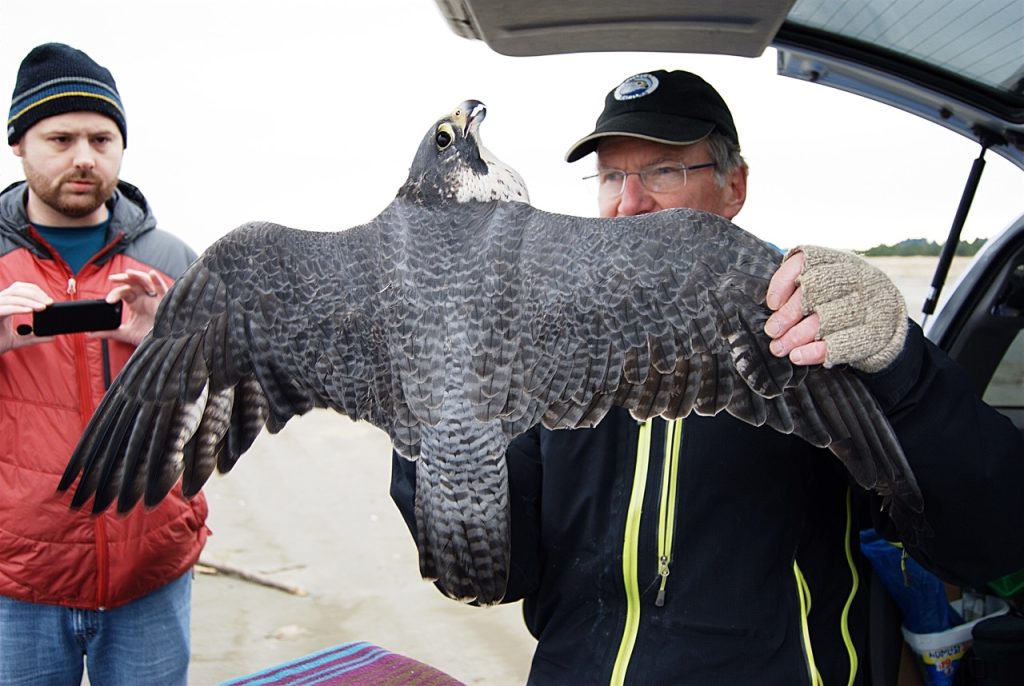
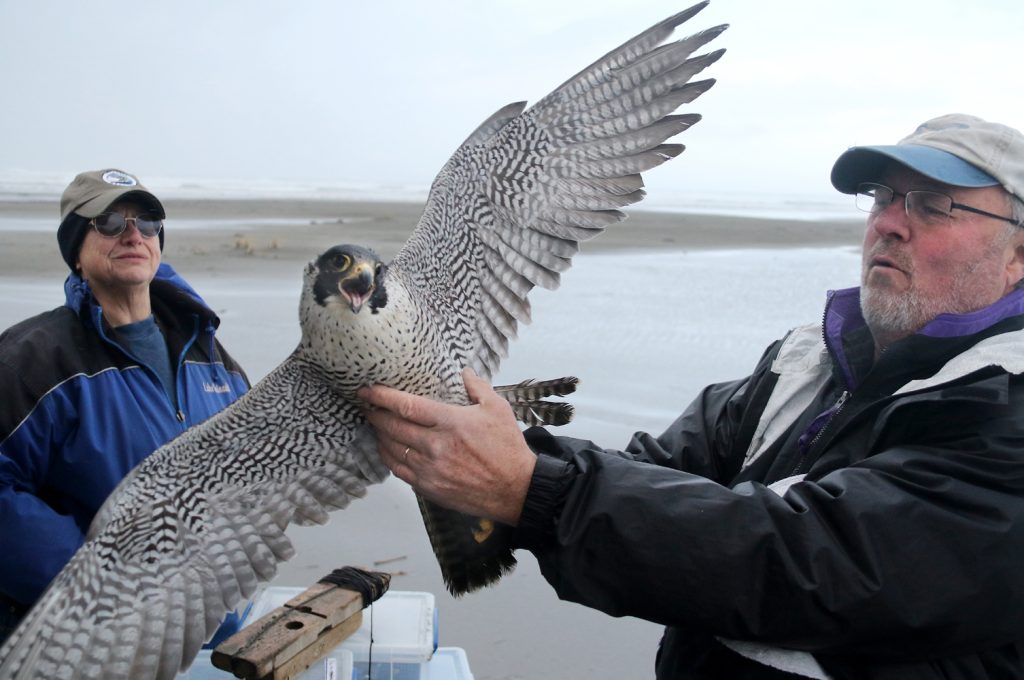
January 14, 2022, Grayland. The photo below marks the last re-sighting of Z/U. All of them occurred from fall to early spring; this is typical of the re-sighting pattern for many of the peregrines in our study. Grayland beach was an important part of her wintering area.
Where did she nest over the course of her life? The answer to that question as well as the cause of her death will remain a mystery.

